Hi, guys! Do you ever switch on lights in the day to make a world of difference in your mood? An enclosed space in a dark room can induce a sense of a smaller room and have an impact on the mood, making the room feel even darker, especially when using dark colors around the room. It’s not just about looks; learning how to bring in more natural light to a room is about knowing how much it wisely contributes to a healthier living environment and helps brighten a room.
Natural light has been shown to increase levels of vitamin D, regulate sleep, and generally improve the state of mind, helping to brighten up a room without natural light. Plus, increasing sunlight in your home can reduce energy bills by decreasing your dependence on artificial lighting and help to lighten a dark room with a lot of natural light that comes in.
In this article, I would like to share with you how to make the room feel more spacious and bright. you some proven methods to bring more sunlight into your room and transform your living space.
12 Expert Ways to Get More Natural Light
1. Window Treatments
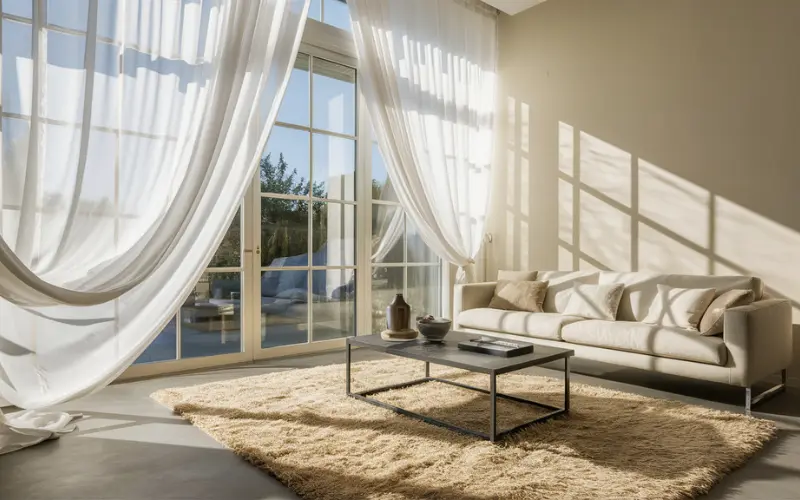
Your view of the Lighting Barrier Effects window treatment can significantly affect how to get more Natural light in a room can be enhanced by strategically placing table lamps and mirrors.
• Select light-filtering materials that help bounce light throughout the room. Using sheer curtains, such as sheer curtains, can permit light to pass through and make the room appear larger and much brighter.
• Note top-down, bottom-up blinds that provide light while also bouncing light around the room for added privacy and a bigger and brighter feel.
• Experiment with cellular shades that convert the harsh sunlight into a gentle diffused light.
Maximize Window Exposure to Make your Room Feel Lighter and Appear Larger
• Keep the room uncluttered to allow light to flow freely and make the space feel more open. curtains fully open during peak daylight hours.
• Mount curtain rods 6-12 inches wider than windows to expose the entire glass when open.
• Clean windows regularly to ensure they can brighten a dark room effectively. Dirty glass can block up to 30% of natural light.
Just a change from heavy drapes to light-filtering can make a huge difference in the amount of sunlight that comes into a room.
2. Strategic Mirror Placement
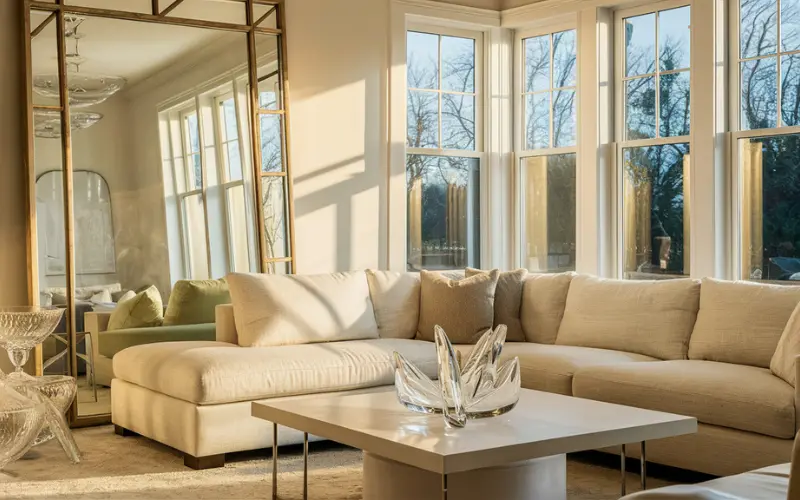
Multiply Your Light Sources Mirrors are an effective means of reflecting light in a room and bouncing the light around.
• Put a very large mirror up against the window to create an increased amount of incoming light.
• Angle mirrors in towards dark alcoves to direct sunlight to shadowed spaces and absorb light.
• Think about reversed furniture or cabinet doors to make the room feel bigger and allow more light back into the whole room.
When placing mirrors, consider the quality of light you’re reflecting. Eastern morning light is generally cooler, whilst western afternoon light provides a more golden sense and warmth.
3. Paint and Color Choices
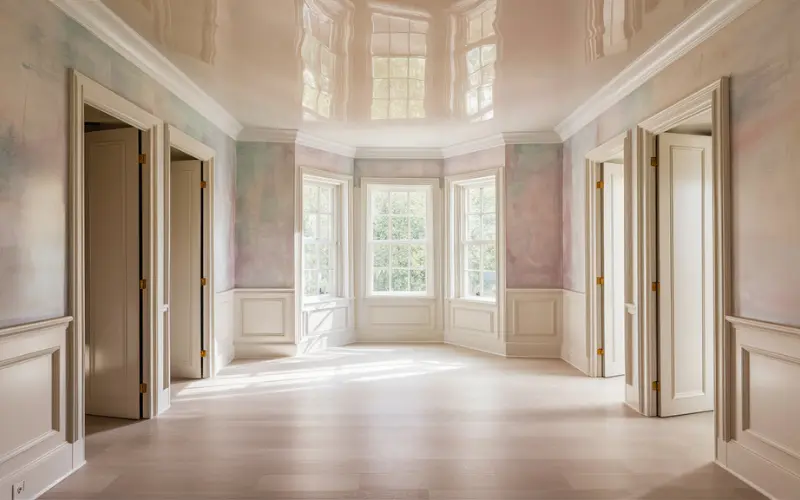
Create a light-amplifying canvas wall and color it to make as much light as possible inside the walls.
• Select high-gloss finishes that are up to 20% more luminous than matte finishes.
• Select whites with subtle warm undertones to create a sunlit effect even on cloudy days in a room that might otherwise feel dark.
• Reflect pale yellows or soft blues that resemble daylight to create an airy atmosphere.
Beyond Wall Color
Consider using table lamps and other light sources to further brighten a dark room.
• When painting walls lighter than the ceiling, height and the effect of reflection are achieved.
• Semi-gloss white on trim for contrast and light scattering in corners can make the space feel larger and much brighter.
• Light-colored flooring or floor carpet is suggested to bounce light upwards.
Well! According to designers, creating a welcoming atmosphere can significantly enhance any space. If you use lighter tones, you can make a room feel brighter with more sunlight, which is easily achievable.
4. Furniture Arrangement
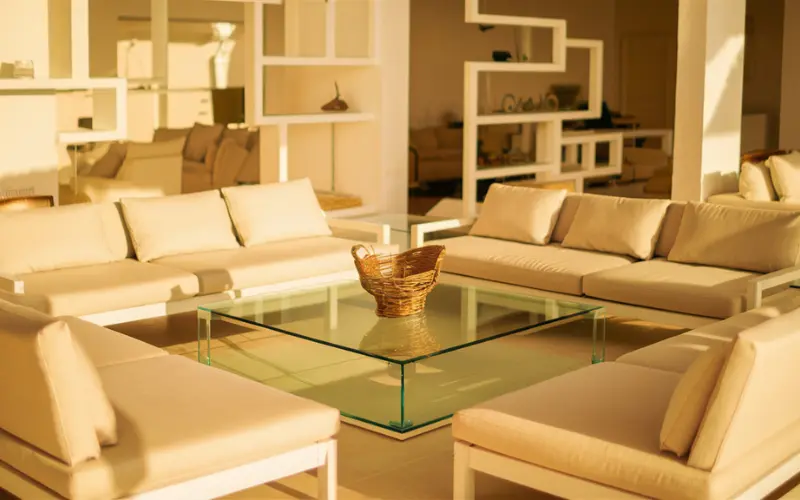
Clear the Path for Sunlight How you position furniture directly impacts how to maximize natural light in a room, can brighten a room, and add warmth and comfort.
• Pull large pieces of furniture away from windows to help bounce around the light and brighten up a room.
• Choose shades of grey to complement your decor while still allowing light to filter through. Lower-profile seating that doesn’t block light flow.
• Organize the furniture in conversational groups instead of against the walls in order to promote light movement and make your room feel lighter and brighter.
Select furniture pieces with glass or reflective elements, and opt for lighter upholstery colors that won’t absorb sunlight to help decorate a dark room. The basic reorganization of natural light flow through your environment can dramatically lighten dark areas and make the space feel larger.
5. Reflective Décor Elements

• Present crystalline or glassy objects that refract and diffract light.
Choose Picture frames with metallic or glossy finishes can enhance the reflective qualities of lamps and brighten a dark room.
• Install light-colored lampshades that light up when they are behind natural light to help brighten up a room.
These small features add up to hundreds of tiny reflective facets, which collectively add light to your environment throughout the day, thereby enabling a natural increase of sunlight inside the house.
6. Window Cleaning and Maximization
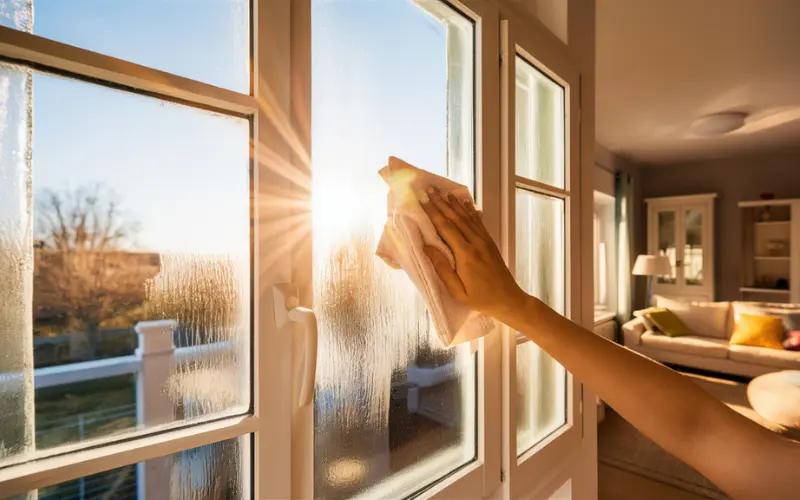
• Yearly clean your windows inside and out to ensure as much transparency as possible.
• No screens and/or filters in winter; insect season is not present.
• Trim dark color elements to lighten a dark room. exterior foliage that may block incoming light.
Ways to bring more natural light Bringing light into your house can be as easy as making sure your windows are clean and unobstructed, allowing direct light to enter.
7. Smart Lighting Strategies
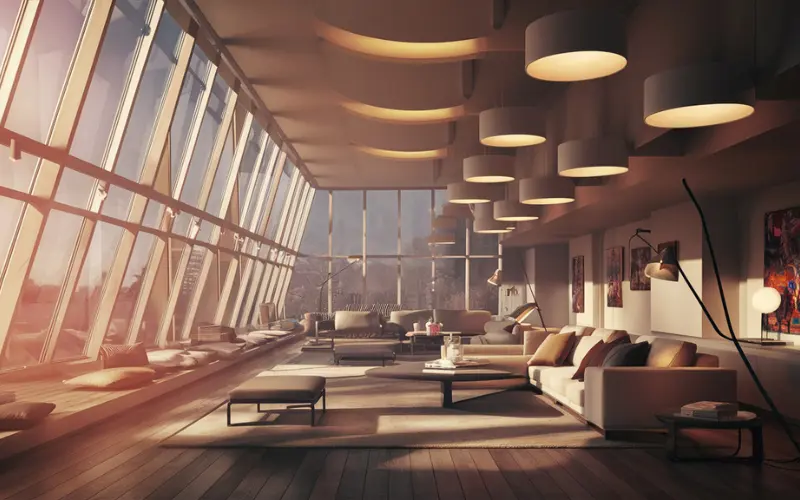
• Install dimmers in order to control the artificial light when sunlight is available, especially in rooms with a lack of light.
• Ambient up lights at corners to emulate real light reflection.
• Position the task light to cover areas where natural light is insufficient, especially in low-light conditions.
• Pick full-spectrum bulbs that simulate daylight, and think about smart bulbs that are able to change brightness based on the time of day to help your room appear brighter.
Good artificial light is not a rival to good natural light; it augments and extends good natural light to help bounce around the room.
8. Budget-Friendly Solutions to Help Bounce around More Natural Light

Hang light-colored, full-coverage shower curtains that can be fully dispensed when not showering to help brighten the space.
• Place battery-operated LED strip lights in shadowy areas to help bounce the light around the space and minimize dark furniture effects.
• Use removable light-reflecting window film for privacy without darkness.DIY light enhancers can also make a huge difference, such as creating a wall of small mirrors from thrift store finds or positioning aluminum foil behind dark furniture to create hidden light reflectors that bounce light effectively.
9. Advanced Solutions

Install solar tubes or tubular skylights, which can transport light from the roof to the ceiling.
• Substitute solid interior doors with translucent glass equivalents to gain a lot of natural light from the neighboring rooms.
• Cutting down non-load-bearing walls for an open floor plan.These are good solutions regarding the significant improvement to how much light can be added to apartments or rooms with little access to natural light.
10. Solutions for Windowless Spaces
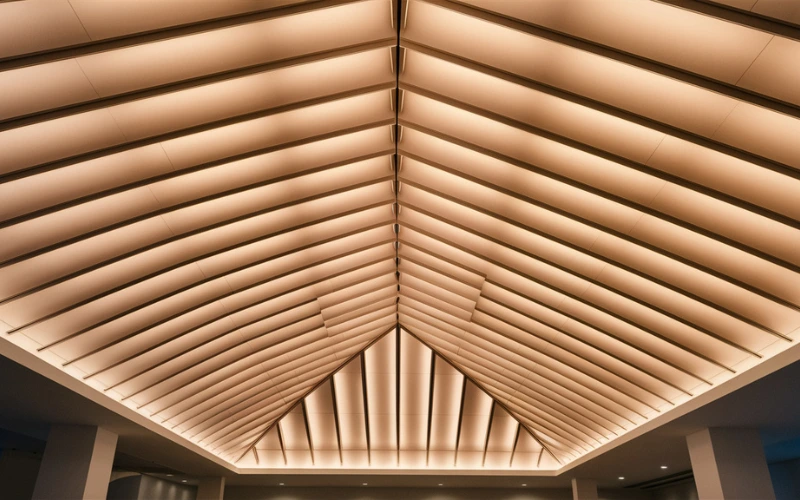
Install LED panels through frosted acrylic to create a skylight effect and brighten up a dark space.
• Use full-spectrum lighting fixtures recessed into ceilings.
• Place light tubes that connect to sunny spots in your house.
Digital technologies such as light bulbs can enhance the natural light in your home to make it feel bigger and brighter. Smart lighting systems lighting solutions that emulate natural light cycles can be utilized to increase the feeling of openness and brightness in small rooms.
11. Special Room to Make the Most of Natural Light Considerations
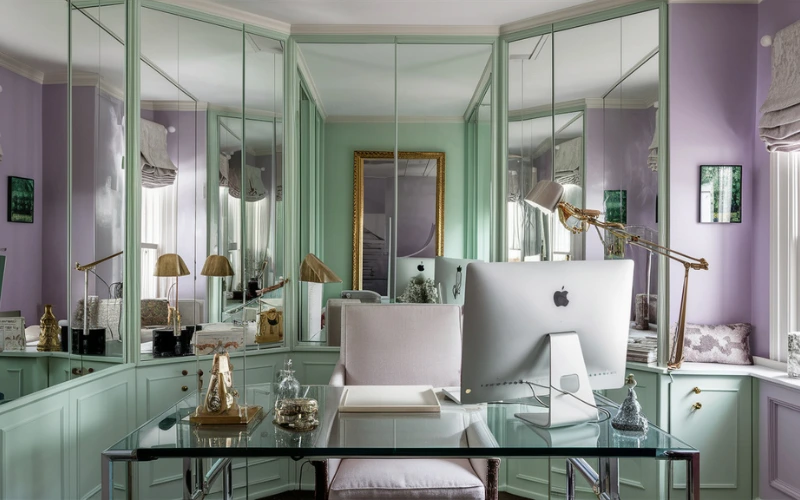
Maximize light available by using light pastel hues on all walls and painting the ceiling to create a brighter space feel.
• Position mirrors strategically to bounce around any available sunlight and brighten the space.
• Select furniture with reflective surfaces to maximize the available light.
These techniques can be effective for overcoming some of the challenges like how to bring in as much sunlight as possible making a dark room brighter.
12. Maintaining Your Light-Filled Space
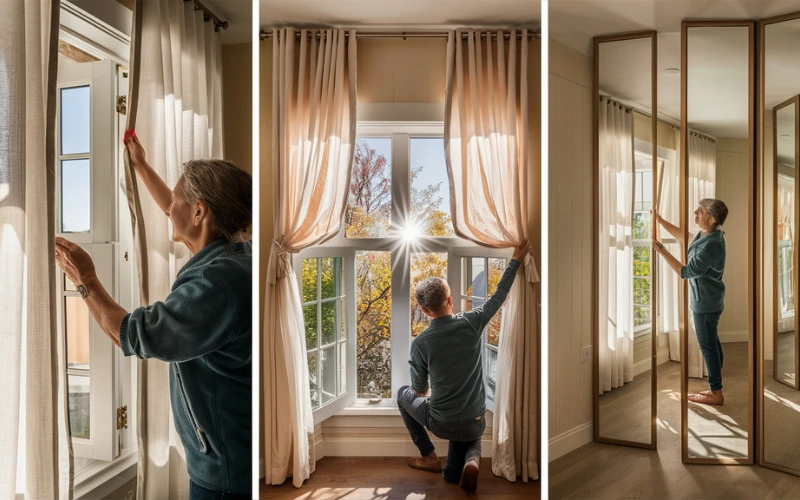
Adjust window treatments seasonally—lighter in winter for more direct light that will bounce, filtered in summer to help absorb light effectively.
• Establish a regular window-cleaning schedule, particularly pre-low-light winter period, to ensure you can brighten a dark room effectively.
• Reposition an observer’s mirrors and reflecting objects as the Sun’s position does.
Generating awareness of the way sunlight affects your space within the course of the year helps you to maximize natural light in your home sustainably.
Conclusion
Well! To wrap up our discussion, it may be concluded that there are various ways to brighten a dark room and enhance its overall ambiance by incorporating more sources of light. Therefore, transform Your Space with Natural Light to brighten your home.
Increasing natural light in your home creates more than just a brighter room; it transforms how you experience your space. By implementing these strategies, you’ll create environments that feel more spacious, welcoming, and energizing.
Start with simple changes like strategic mirror placement and lighter window treatments, and gradually incorporate more substantial modifications as your budget allows.
Remember, natural light in a room isn’t just about aesthetics; it can also make the room feel more inviting.; it’s about creating healthy, uplifting spaces that enhance your quality of life.
Previous: 10 Expert Tips for Planning a Major Home Renovation Project:Home Remodel Guide



